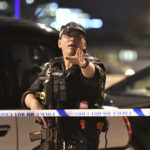For the past three weeks we have been running a series in the Security Weekly that focuses on some of the fundamentals of terrorism. First, we noted that terrorism is a tactic not exclusive to any one group and that the tactic would not end even if the jihadist threat were to disappear. We then discussed how actors planning terrorist attacks have to follow a planning process and noted that there are times during that process when such plots are vulnerable to detection.
Last week we discussed how one of the most important vulnerabilities during the terrorism planning process is surveillance, and we outlined what bad surveillance looks like and described some basic tools to help identify those conducting it. At the end of last week’s Security Weekly we also discussed how living in a state of paranoia and looking for a terrorist behind every bush not only is dangerous to one’s physical and mental health but also results in poor security. This brings us to this week, where we want to discuss the fundamentals of situational awareness and explain how people can practice the technique in a relaxed and sustainable way.
Situational awareness is very important, not just for personal security but as a fundamental building block in collective security. Because of this importance, Stratfor has written about situational awareness many times in the past. However, we believe it merits repeating again in order to share these concepts with our new readers as well as serve as a reminder for our longtime readers.
by Scott Stewart



